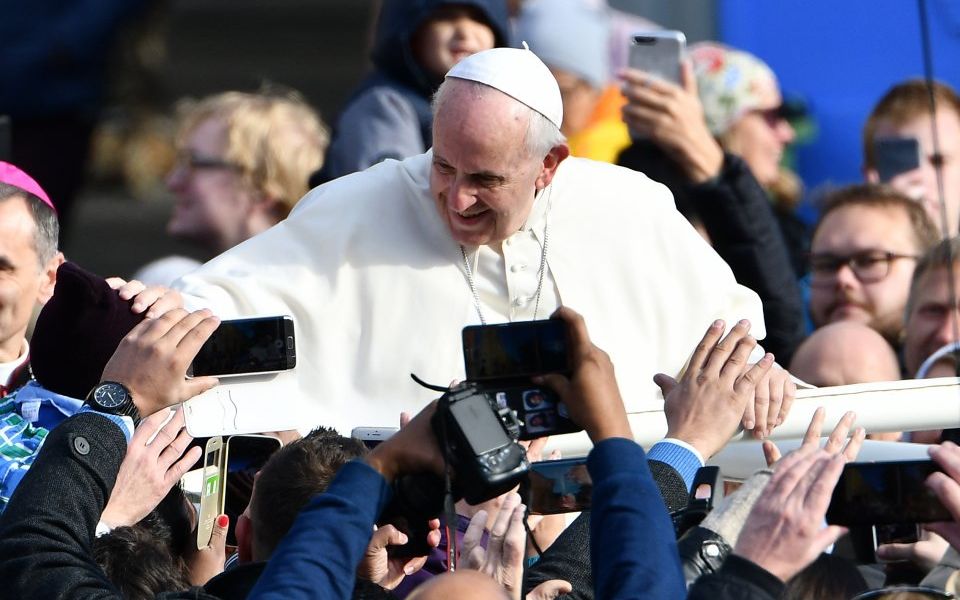How a new ‘CEO’ can singlehandedly transform a brand

THIS WEEK MARKS the fifth anniversary of Pope Francis’ inauguration. To Catholics, he is a divisive figure. Right-leaning Catholics have taken exception to his aggressive criticism of unbridled capitalism, which he called ‘the dung of the devil’. In 2014, Timothy Dolan, the Archbishop of New York, actually wrote a column in the Wall Street Journal reassuring Catholics that Pope Francis wasn’t actually a socialist.
Then, in October 2015, Pope Francis was seen to be attacking hardline Catholic conservatives. At the end of a synod (a formal gathering of senior Vatican officials where doctrine and official policy is discussed and recommended) the Pope attacked those who act with ‘closed hearts, which bear the closed hearts which frequently hide even behind the Church’s teachings or good intentions, in order to sit in the chair of Moses and judge.’ In his 2016 encyclical, Pope Francis caused a storm when he suggested that the Church grant communion to the divorced and remarried. A group of cardinals event sent the Pope a formal dubia (‘doubts’) asking him to clarify his comments. The Pope has not yet replied.
But maybe the most significant ‘controversy’ was the ‘who am I to judge line?’ that Francis made when asked about gay people. In 2013, LGBT magazine Advocate named Pope Francis its 2013 Person of the Year and NBC, revealing the importance of his statement, asked if ‘five little words … could change the course of the Catholic Church?’
The Catholic Church is not a retailer or a bank or a traditional business of any kind. But in spite of that, we can learn a lot about the power of a new ‘CEO’––a new figurehead or leader––to change a brand singlehandedly. Incoming CEOs are expected to make changes, and have the good will of the board or the wider company when they do. This creates a window of opportunity for that CEO to force through changes, some of them potentially dramatic, without causing a storm––at least not right away. The greater the ignominy that surrounds the departure of the predecessor, the more power the incoming leader has in these early stages. And there is usually a feeling from the board, the employees and the public that even if a new CEO brings in dramatic changes early on, the right thing to do is wait and see if it’s part of a grander plan.
The best recent example of this comes from Uber. In 2014, CEO Travis Kalanick was roundly criticised for making a sexist joke in an interview with Esquire, and after that, Uber were rarely out of the papers. Employees were accused of spying on celebrities. There were allegations the company was spamming rival companies. An Uber executive even suggested digging up dirt on critical journalists. It was an Uber employee, Susan Fowler, who blew the whistle on the appalling treatment of women in Silicon Valley when she wrote a 3,000-word blog post this February chronicling the daily indignities she faced at the company. Kalanick held on and on, but eventually the board decided it was too much, and he announced that he would take an indefinite leave of absence.
His replacement was Dara Khosrowshahi, who made it immediately clear that he had no intention of following in Kalanick’s footsteps. In contrast to Kalanick’s strongman image, Khosrowshahi showed vulnerability, admitting he was ‘scared’ in a note to the staff of Expedia, his former company. He then expressed unambiguous support for the ‘DREAMers’––the illegal immigrants who were brought to the United States of children––while Kalanick had consulted with the Trump administration and failed to condemn its more unpopular decisions quickly.
The list goes on. Khosrowshahi apologised to London when Uber was banned and flew across in person to see what he could do. He offered free rides in Mexico when it was struck by an earthquake, and donated more than $250,000 to the Mexican Red Cross. And then, in a bold move, he criticised the man who made Uber what it was, calling the news that Kalanick had appointed two new board members in September 2017 ‘disappointing’ and ‘highly unusual’. Most significantly, Khosrowshai emphasised diversity and inclusion. Uber’s treatment of women and minorities had plagued the company’s public image for years, and Khosrowshahi announced on Twitter that ‘inclusivity and diversity @Uber are hugely important.’
Maybe it was Inc. who described the current situation best. ‘Uber CEO Dara Khosrowshahi is the exact opposite of Uber founder Travis Kalanick’, a headline read. The article described his empathy, is rule-making, his ability to consolidate and his self-awareness. It’s clear that if Uber hasn’t quite been rehabilitated, it is on the way to salvaging its reputation. And that is thanks to the singlehanded efforts of its new CEO.
Incoming leaders, in many contexts, can drag a brand kicking and screaming out of the mud. They can also do the opposite. But in a world where business leaders are becoming more and more recognisable and politically active, they have more power than ever before to transform a brand.